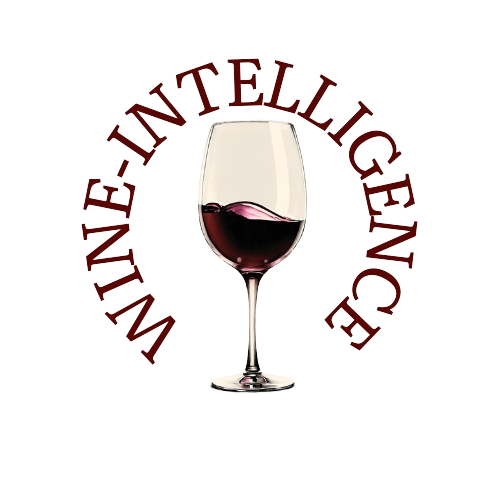In Russia, retail remains the dominant channel for wine sales, accounting for over 95% of purchases in physical terms.
In 2023, approximately 818 million liters of wine were sold, with only about 40 million liters (4.5%) consumed in the HoReCa sector (hotels, restaurants, and cafés). While restaurant sales have remained stable, the overall market has expanded significantly, reducing HoReCa's share in relative terms. The trend in 2024 suggests increasing demand for natural wines in restaurants, according to Alexander Stavtsev, Vice President of the Association of Retail Market Experts.
Retail Wine Assortment and Growth of Russian Wines
Major supermarket chains in Russia typically carry an average of 1,448 stock-keeping units (SKUs) of wine, with imported wines historically comprising the majority. However, their share has declined from over 80% in 2022 to around 75% in 2023, reflecting the rising presence of Russian wines. Chains such as Perekrestok, Lenta, Metro, and Auchan report a growing consumer preference for domestic wines, driven by competitive pricing and improved production quality.
Lenta’s purchasing head, Irina Kolosova, noted that Russian wine’s market share increased by 5% year-on-year in 2024. Auchan’s press service highlighted efforts to promote Russian wines through targeted campaigns in hypermarkets, especially in southern Russia. Metro representatives also emphasized the growing reputation of Russian wineries, bolstered by improved quality and expanding wine tourism.
Price Segments and Inflationary Trends
Russian wines are primarily positioned in the lower price segment, with 83% priced under 1,000 rubles per bottle, 15% in the 1,000-3,000 ruble range, and only 2% exceeding 3,000 rubles. By contrast, imported wines distribute as 56%, 41%, and 3%, respectively. Wine prices in Russia saw an overall inflation rate of approximately 15% in 2023, influenced by higher import duties, minimum duty rates, increased excise taxes, and rising production costs. The impact was especially pronounced in the low and medium-priced import segments, according to Perekrestok’s wine category head, Natalia Shestak.
Import Trends: Europe Still Dominates
Despite geopolitical and economic shifts, European wines continue to dominate imports. Metro sources wines from 23 countries, with Italy (21%), France (13%), and Spain (10%) being the most prominent suppliers. Perekrestok’s assortment includes wines from 25 countries, with Italy (18%) and Spain (12%) leading the way. Auchan features wines from 15 countries, with strong demand for Italian, Spanish, and Georgian selections.
Perekrestok independently imports 52% of its foreign wines, significantly above the industry average of 28%, showcasing a strategic approach to maintaining supply despite increased tariffs on wines from "unfriendly" countries. The reliance on European wines persists, although the sector has begun to explore alternatives from Georgia, Argentina, and Chile.
Challenges for Russian Wine Expansion
While Russian wine is gaining ground in retail, several factors limit its expansion, particularly in HoReCa. One major challenge is the logistics of distribution. Most restaurants source wine through established distributors, making it difficult for wineries to enter the market directly. Additionally, small-scale production limits the availability of premium and sub-premium Russian wines, restricting their presence in high-end restaurants.
According to Igor Bukharov, President of the Federation of Restaurateurs and Hoteliers of Russia, incentives are needed to promote Russian wines in the hospitality industry. However, proposals for mandatory quotas requiring restaurants to include 20% domestic wines in their lists face resistance due to supply limitations. Currently, Russian wines make up just 10% of the selection in many restaurants, although there is gradual growth.
The Role of Distributors
Distributors such as Fort, LADOGA, and Simple Group control a substantial portion of restaurant wine sales. Fort’s portfolio includes wines from 24 countries, with top suppliers being France, Italy, Spain, Argentina, and New Zealand. Simple’s range focuses on France (46%), Italy (29%), and Spain (7%), with Russian wines still a minor component. LADOGA, meanwhile, sources from Georgia, Italy, Chile, and Spain, reflecting a broader market shift towards non-European wines.
Premium Russian wines are gaining recognition but remain a niche. Simple collaborates with nine premium Russian wineries, Fort with four, and LADOGA with ten. Their selection criteria emphasize quality, stable supply, and market demand. However, limited production volumes remain a critical challenge, as highlighted by Metro and Auchan, which both stress the need for consistent availability and fair pricing.
Conclusion
While retail remains the backbone of wine sales in Russia, the market landscape is evolving. Russian wines are growing in prominence, driven by improved quality and competitive pricing, but challenges persist in distribution, consumer perception, and production capacity. The HoReCa sector continues to favor imported wines, although niche trends like natural wine are gaining traction. With strategic support, domestic wine could expand its footprint in both retail and hospitality, but sustained investment and consumer education will be key to long-term success.
Source: RBC Vino

